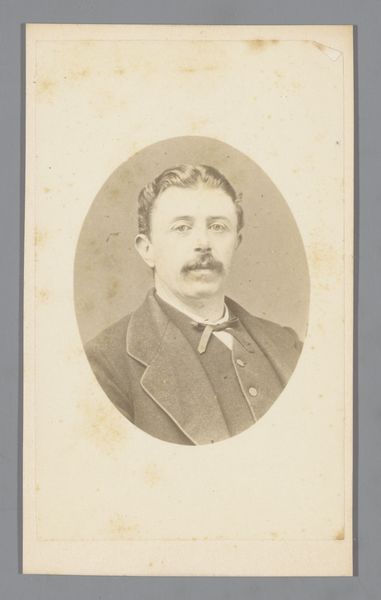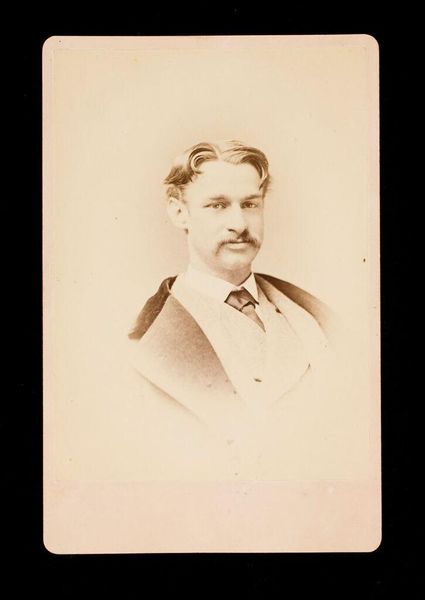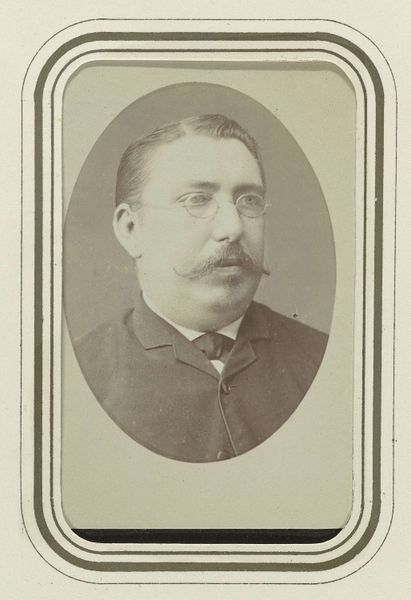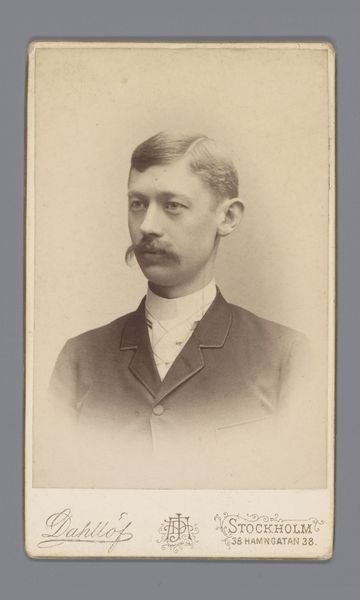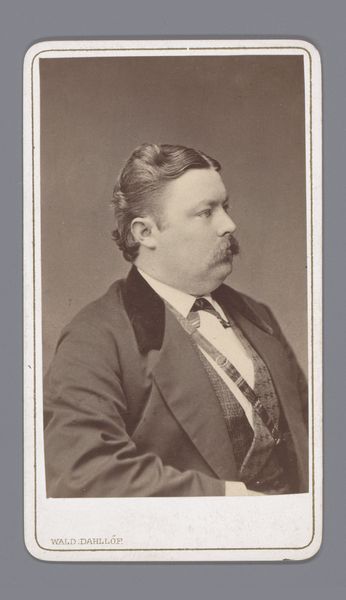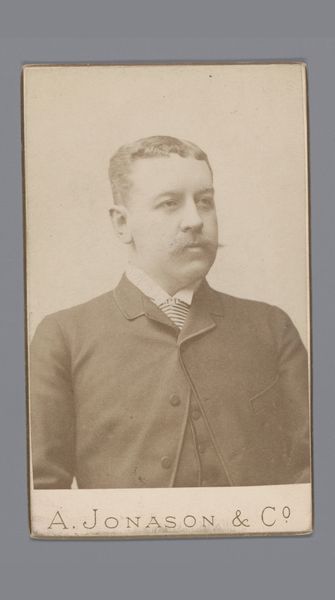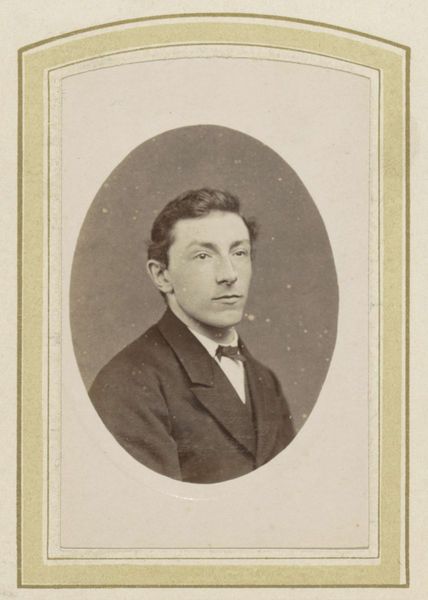
photography, gelatin-silver-print
#
portrait
#
photography
#
historical photography
#
gelatin-silver-print
#
19th century
Dimensions: height 138 mm, width 98 mm, height 165 mm, width 108 mm
Copyright: Rijks Museum: Open Domain
Curator: Before us is a gelatin-silver print dating from 1875 to 1900, a portrait of W.H. ('Willem') van Braam, created by Carel Eduard Westerborg, now residing here at the Rijksmuseum. Editor: The tonality is immediately striking, sepia suffusing the scene and imbuing it with an old-world gravitas, almost an air of melancholic remembrance. The oval format and mounting further constrain and formalize the image. Curator: Indeed, the sepia tones are so common in the historical record, aren’t they? Consider the cultural associations tied to the image of the gentleman of this period; mustache waxed and jacket buttoned high, with what looks like a token dangling around his neck. It projects respectability, civic duty. Editor: Yes, and yet the averted gaze disrupts any sense of complete authority or self-assuredness. The subject looks towards, but away, as if contemplation draws him from the present moment. This diagonal gaze cuts against the oval constraints, giving the figure room, dynamism, interiority. Curator: Absolutely, that’s wonderfully put. He embodies that fin-de-siècle tension between the rigid codes of the old guard and the burgeoning psychological and social shifts that were only going to intensify in the new century. It becomes something more intimate; it almost humanizes someone who would have probably felt a responsibility to stand tall. The slight imperfections within the photographic process—the mottling of the background—feel like part of his narrative too. Editor: Yes, imperfections offer another interesting layer: these variations across the print speak to the specificities of early photographic technology. It resists flawless re-production—suggests the aura Benjamin might argue that is bound up in the material uniqueness of the image. Curator: What’s so potent is how this single image encapsulates and almost unwittingly anticipates the transformations that the man—and the world—would have seen across the coming years. We have these vestiges of what came before, even in his presentation. Editor: We have peeled back layers today—delving into composition and the material, alongside wider questions around culture and narrative. Hopefully it offers a rich account for the visitor here at the Rijksmuseum.
Comments
No comments
Be the first to comment and join the conversation on the ultimate creative platform.



